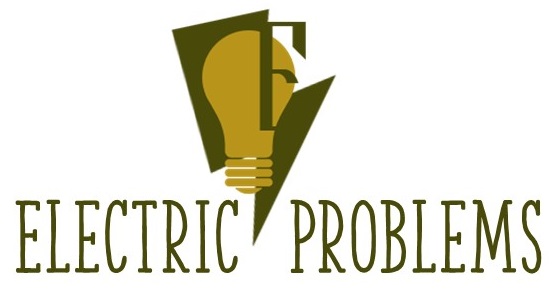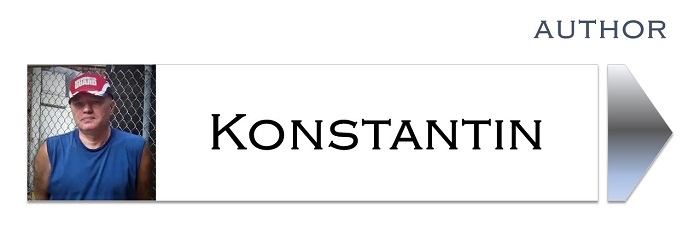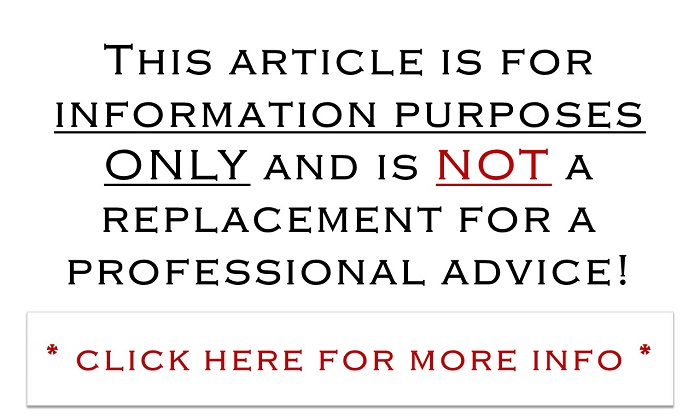![]()
Rotary Phase Converter [Sizing and Buying Guide]
DISCLAIMER: AS AN AMAZON ASSOCIATE I EARN FROM QUALIFYING PURCHASES. THIS POST CONTAINS AFFILIATE LINKS THAT WILL REWARD ME MONETARILY OR OTHERWISE WHEN YOU USE THEM TO MAKE QUALIFYING PURCHASES. FOR MORE INFORMATION, PLEASE READ MY EARNINGS DISCLAIMER.
Rotary Phase Converter (or RPC) is a machine that is designed to change single-phase power into three-phase power. These converters could be used to run industrial machinery with three-phase motors or any 3-phase motor in your own shop.
Single-phase motors are known to produce no more than 15 hp (11 kW) with many of them producing up to 5 hp (3.7 kW). There is a great demand for three-phase motors because of the power they generate (15 hp + ), easier starting, and greater efficiency than ones that work on a single phase.
Phase converters are very popular among shop owners since it’s a bit pricey to get your own 3-phase power line. Rotary Phase Converters will allow you to use 1 phase power supply coming from your utilities and change it into a power source that could be used for any 3-phase motor (or series of motors), as long as the appropriate size is used and everything is connected properly.
Rotary Phase Converters also allow you to run smaller loads on the larger size converter without a problem (could be manufacturer-specific, check your manual first), which is great for future expansions! This little piece of machinery (converter) could be indispensable in deciding whether to expand your business by getting new equipment or even starting a business (woodworking shop, for example) in the first place.
As of now, there is a lot of different equipment out there that requires 3 phase power to operate at maximum efficiency and this is why phase converters became quite popular. If you need to use a three-phase power source for your business or hobby shop, the two most common options are:
-
- Rotary Phase Converter. This one can constantly deliver 3-phase power to your motor.
- Static Phase Converter. It only gives 3-phase power at the start-up.
- Rotary Phase Converter. This one can constantly deliver 3-phase power to your motor.
The difference between Rotary Phase Converter and a Static Phase Converter is that the Static Phase Converter will only startup your 3-phase motor and then switch back to the single phase. On the other hand, the Rotary Phase Converter will keep on giving your device a full three-phase power to keep your engine running.
Not ALL devices could run on the Static Phase converters and you should use this system only for motors where the operator can control the load. Devices that use FULL horsepower for their motors should be used only with Rotary Phase Converters
Rotary Phase Converter will get your engine to full HP while allowing you to run smaller motors as well. With Rotary Phase Converter you will also have the ability to use multiple 3-phase machines at the same time (if connected properly) and the opportunity to have several phase converters to satisfy your growing needs.
Many shop owners use phase converters to run their machines and this includes (but not limited to):
- Welding machines
- Milling Machines
- Table Saw
- Drill press
- Air compressor
- Water pump
- Dust collector
- Hydraulic car lift
- Plasma Cutter
- Convection oven
- CNC
A Rotary Phase Converter is designed to run all types of loads and that includes:
- Motors
- Resistive loads
- Inductive loads
Following industries found great use of Rotary Phase Converters:
- Agriculture. RPC could be used for any three-phase motor agricultural equipment like blenders, pumps, fans, etc.
- Automotive. If you own an auto shop car assembly facility, Rotary Phase Converter could be a great use for you! Anything from hydraulic car lifts to assembly lines line could be powered by RPC.
- Industrial. If you want to enhance the productivity of your warehouse or a factory, RPC will supply you with stable and efficient three-phase electric power for your equipment.
- Food supply. If your local utility company does not provide you with the three-phase power that you need for your equipment, Rotary Phase Converter will give you the opportunity to fill that gap. Thanks to the RPC system, anything from baking to packaging could now be handled by 3-phase machines, which is also cost-effective.
- Wood Processing. A lot of wood processing equipment requires a 3-phase power source and if it’s not readily available, RPC is your perfect solution!
Rotary Phase Converter (RPC) loads are generally divided into the following sections:
- General-purpose. Non-computer machines with small to medium resistance.
- Hard-load. Machines that start against a load and get to their full HP while running.
- Very hard load. Machines that have high inertia and long startup time.
- Computer-operated. Machines that get commands from the computer.
Rotary Phase Converter consists of the following components:
- Idler generator. The idler generates a third sine wave and combines it with 2 single-phase lines.
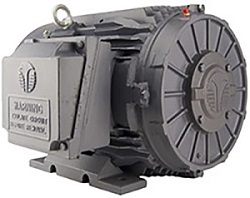
- Control panel. This panel controls the idler-generator and balances voltages between phases.
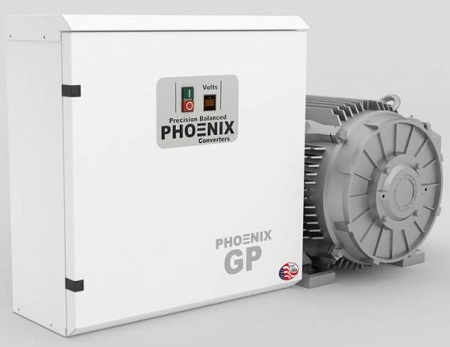
Rotary Phase Converter sizing
Before sizing your phase converter, you will need to find out the exact specifications that reflect your electrical power needs. You will see the numbers in:
- AMPs. Ampers.
- kWs. Kilowatts.
- HP. Horsepower.
- kVA. Kilo-volt amperes.
You will also need to know what type of voltage your equipment requires to run on in order to calculate your power needs properly.
Converting AMPs to HP
If you know your motor’s AMPs, use this formula to get HP:
Amps x Volts = Watts
With 1 HP being equivalent to 746 Watts, use this formula for final conversion:
Watts / 726 = HP
Converting kW to HP
If you know your kW, but need HP:
kW / 0.746 = HP
Converting kVA to HP
This is the formula for kVA to HP conversion:
kVA × Efficiency × Power Factor / 0.746 = HP
This calculator can help you out with calculations also.
What size do you need?
When sizing a Rotary Phase Converter, the general rule is to get the converter TWICE THE SIZE of your engine. Look at the HP (horsepower) rating of your machine and a converter of HP rating that is double that.
Here is an example:
20 HP motor x 2 = 40 HP Rotary Phase Converter
Everything else comes down to what type of load you have. This topic was converted very well in the following article: “Phase Converter Sizing“.
** Very important! Check carefully if the manufacturer specifies the power of your converter or the size of the load that you can run on the converter (and does not mention the actual size of the converter).
If they DON’T mention the size of your converter, you may need to call them to figure this out. The information on the Rotary Phase Converter size is very important in order to plan your electrical setup and breaker size.
Buying Rotary Phase converters
So what to look for when purchasing a Rotary Phase converter? Before I get into popular RPC manufacturers, let’s check the important points:
- Reputation. Talk to your friends and see what they recommend. If you never had any experience with Rotary Phase Converters, this is a good way to get some information.
- Read reviews. Skip the good ones and go for the bad ones. This is how you know what problems people had and if they are insignificant or were quickly resolved by customer service, here is your winner.
- UL-listed. Products that are checked by Underwriters Laboratories are usually the ones that could be trusted. There are good products out there that are not UL listed and you can try testing them out yourself. But if you have limited resources and not so much time, go for the ones that were checked already by this organization.
- Warranty. This is a key component to check before you decide whether to trust a company or not. Do they trust that their own products will not break prematurely? If they do, the warranty generally reflects that.
Here are five tips from American Rotary about buying a phase converter:
![]()
Installing Rotary Phase Converters
Before installing your Rotary Phase Converter, make sure your electrician checks the following:
- You have enough power coming through. If you don’t, you may need to ask your power company to increase the amount of service coming into your shop or factory.
- You have a sufficient service entrance size. Check manufacturer’s guidelines to determine the service size needed for your converter and load.
![]()
It is also important to select the correct wire size and get minimum fusing recommendations. If in doubt, get on the phone and call the company to clarify.
Before the installation you also should:
- Carefully read the manufacturer’s instructions. This may sound basic, but this is where “experience” may give you a bad service! Even if you think that you know what you are doing, manufacturers know their products the best and will give you good tips and information on how to install them better.
- Understand NEC or NFPA standards. Your installation should be adapted to the National Electrical Code (NEC), or NFPA 70, which are nationally and regionally recognized standards for safe electrical practices.
- Find wiring schematic. No, not from the internet! You will find it in the user’s manual and have your electrician follow your manufacturer’s suggested wiring for your rotary converter system.
If you feel confident enough to do the installation yourself, this video should help you out:
![]()
** Warning! Don’t forget that working with electricity is dangerous and a little mistake can cost you even life. Please consult a professional if you are not sure about what you are doing.
American Rotary phase converter
Even though the rotary phase converters do basically the same job, the American Rotary phase converters are considered to be one the best on the market right now. The main reason for that is that its generator operates at greater than 98% efficiency and people rave about their customer service.
Add that to advanced technological design, now you got the optimal solution to your 3-phase power needs. If your phase converter delivers the clean, balanced three-phase power, then there is definitely something that your equipment will “appreciate”.
American Rotary uses systems like:
- Soft starting. This is a special technology that requires only 1/3 of the inrush current for the motor to start up.
- Smart controller. This patented device is designed to monitor and control voltages that are coming through.
I heard a lot of great things about this company and this is why I am featuring it. Their website is americanrotary.com and this is their official installation video:
![]()
Other Phase Converter manufacturers
Here is a list of some Rotary Phase Converter manufacturing companies that are worth looking into:
- North American Rotary Phase Converter. Another leader in manufacturing Rotary Phase Converters. They offer three types of RPC, which are standard, digital (with current boost mode and active voltage balancing), and just a control panel that could work with your own idler motor.
- Phoenix Phase Converters. Rotary Phase Converters from this company are designed for a wide range of environments (industrial, outdoor, woodworking, and dusty environments). They also offer systems with autostart capabilities.
- Ronk Rotary Phase Converters. These converters produce smooth, reliable 3-phase power for a variety of applications. They are easily installed and require minimal maintenance.
Rotary Phase Converters and CNC
Rotary Phase Converters from reputable companies like American Rotary offer a voltage balance of 2-5% across the three legs, which is great for your CNC equipment. If you compare this to a three-phase utility setup, you will only get a voltage balance of around 10%.
Since this is very sensitive equipment, choose the company that you buy it from with care. You will need clean and well-balanced power provided to your machine in order for it to work properly.
Hope this helps,
See you next time!
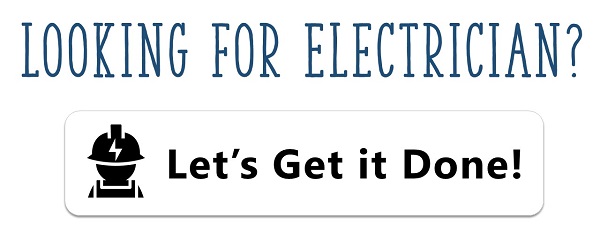
Click on the white button above to find your electrician!

